Header logo
header top contact widget
dental cleaning
Connections of Oral Wellness and Overall Health
Posted on Aug 08, 2024 by William J. Claiborne, DDS MS
Over the past few decades, an increased number of studies have pursued the many connections of periodontal (gum) disease and our overall health. With the findings, research has become more focused with links found between infectious oral bacteria and a growing list of serious health problems.
Periodontitis is the most severe form of periodontal disease. It is a severe form of gum infection that damages soft tissues and destroys the bone that supports teeth. This occurs when toxins produced by the bacteria in plaque irritate the gums.
These toxins activate a chronic inflammatory response in which the body, which turns on itself. This systemic inflammation leads to break down and destruction of tissues and bone that support the teeth.
The potent bacteria of gum disease are able to enter the bloodstream through tears in weakened tissues. It is now known that it can trigger inflammatory reactions that are related to the development of the conditions mentioned above. While it can activate the development of serious health problems far beyond the mouth, it can also worsen others already underway.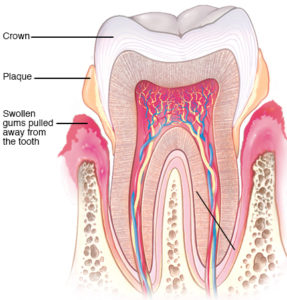
The initial stage of periodontal disease is gingivitis. This may have mild symptoms or even some deemed “normal.” These include areas where the gums are tender or seeing blood in the sink when brushing teeth. However, gingivitis, if not halted, can soon progress to periodontal disease.
Gum disease symptoms include:
• Gums that loosen from teeth (or “recede”)
• Red or swollen gums
• Gums that bleed when flossing or brushing
• Persistent bad breath
• Teeth that may loosen or drift
Without treatment, gum disease worsens. Many people are unaware of the severity of damage capable by these infectious bacteria. Below are some of the correlations that may surprise you.
Using findings from previous research, studies have closely scrutinized two types of oral bacteria pathogens. Researchers found that one pathogen was far more prevalent in the saliva of participants who developed pancreatic cancer with a 59% increased risk of developing the deadly cancer. Just as alarming was that the second pathogen was shown to increase this risk by 50%.
The connections between periodontal disease and other diseases in the body also include a link between oral health and psoriasis. Psoriasis is a chronic disease that affects the skin. Its cause isn’t fully understood but seems to relate to the immune system turning on itself.
This condition causes the life cycle of skin cells to accelerate beyond normal. Cells build up rapidly on the skin’s surface, forming scales and red patches that are often itchy and sometimes painful.
In one study, researchers found that while “people with psoriatic arthritis had about the same rate of gum disease as those without joint inflammation, people with psoriatic arthritis were more likely to have severe gum problems.”
https://www.psoriasis.org/advance/prevention-tips-for-uveitis-stroke-and-gum-disease
Other studies have shown that people with periodontitis (advanced gum disease) are nearly 1.5 times more likely to develop psoriasis than people with healthy gums. Could one trigger the other, and vice versa?
Another study showed that 36% of people with psoriasis had one or more sites of bone loss measuring at least 3 millimeters (over a tenth of an inch). This was compared to 13% of people without psoriasis.
For people who have rheumatoid arthritis (RA), many are learning that research is noting close connections with arthritis and gum disease, too.
RA is a debilitating, painful disease that destroys joints. RA often emerges gradually, initially causing morning stiffness and weak, sore muscles. As inflammation from RA worsens, joints become swollen. Joints become achy and stiff most often in the fingers, wrists, elbows, hips, knees, ankles, toes, and neck. Unfortunately, there is no cure for RA.
Apparently, gum disease and RA share a genetic similarity. The clinical makeup shows similar structures, primarily in pathogens that spark disease or illness. Research has found that the pathological process that occurs in both gum disease and RA are nearly identical.
Both conditions cause chronic inflammation in tissues that connect to bone with both diseases having a similar inflammatory trigger. Even more similar is the particular species of bacteria found in periodontally-diseased tissues when compared with tissues around arthritic joints. In one study, a particular pathogen associated with periodontal disease was found to activate the same destructive process of rheumatoid arthritis.
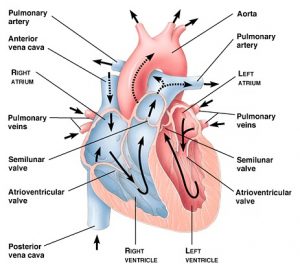 Another example of damage possible by the infectious bacteria of periodontal disease is coronary artery disease. The heart disease connection, as explained by Harvard Medical School’s newsletter, states:
Another example of damage possible by the infectious bacteria of periodontal disease is coronary artery disease. The heart disease connection, as explained by Harvard Medical School’s newsletter, states:
“In people with periodontitis (erosion of tissue and bone that support the teeth), chewing and toothbrushing release bacteria into the bloodstream. Several species of bacteria that cause periodontitis have been found in the atherosclerotic plaque in arteries in the heart and elsewhere. This plaque can lead to heart attack.
“Oral bacteria could also harm blood vessels or cause blood clots by releasing toxins that resemble proteins found in artery walls or the bloodstream. The immune system’s response to these toxins could harm vessel walls or make blood clot more easily. It is also possible that inflammation in the mouth revs up inflammation throughout the body, including in the arteries, where it can lead to heart attack and stroke.”
http://www.health.harvard.edu/press_releases/heart-disease-oral-health
And the list goes on, even including connections between periodontal disease and erectile dysfunction (ED). For men in the 40 – 70 age group, ED affects over 40% with nearly 70% of men at age 70 affected.
One study of 162 males ages 30 to 40 by Turkish researchers, 82 of the participants had normal erection function while 80 who complained of ED, nearly half. Some men in both groups had chronic periodontitis, but the condition was more than twice as prevalent in the ED group.
In another study, 80 male participants who had severe gum disease were more than twice as likely to suffer from erectile dysfunction. This was true even after adjustments were made for other issues that could distort the findings.
Gum disease affects nearly 47% of American adults. It will worsen without treatment and, to no surprise, is the nation’s leading cause of adult tooth loss. As an Asheville periodontal specialist, I have an up-close view of the damaging effects of gum disease.
If you are experiencing signs of gum disease, start with a thorough periodontal examination. Call 828-274-9440 or ask our friendly staff about beginning with a consultation.
If dental fears have caused you to delay or avoid having regular dental care, many treatments can include oral or I.V. sedation (sleep dentistry, or “twilight sleep”).
And, if financial constraints are an obstacle in receiving treatment, we offer several payment plans. Most are interest-free with no down payment required (for qualified individuals). Feel free to ask about these during your consultation.
Energy Drinks Are Erosive To Tooth Enamel
Posted on Jul 12, 2024 by William J. Claiborne, DDS MS
In the U.S., over one-third of adults ages 18 to 29 admit to being regular consumers of energy drinks. For those in the 30 to 49 age group, that number jumps to nearly 42%.
https://www.statista.com/forecasts/228168/energy-drinks-consumption-usa
While many adults like having an afternoon pick-me-up readily available through a beverage, there is growing concern regarding the potential of these drinks to erode tooth enamel.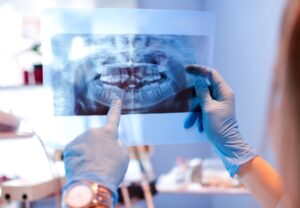
To begin, most energy drinks are high in sugar as well as highly acidic. The acidity is a particular problem because acid is destructive to tooth enamel as soon as it makes contact. Its damage begins as soon as it reaches enamel and continues with each sip.
The American public is likely unaware of just how acidic these energy drinks are. To acknowledge the extent of acidity in these beverages, the pH levels typically range from 1.5 to 3.3, which is exceptionally acidic. These include common brands such as TNT Energy Drink®, Red Bull®, and Monster Energy®.
Comparatively, fairly neutral levels for foods or beverages range 6 to 8 pH. The closer to 0, the more acidic, meaning the 1.5 – 3.3 levels of energy drinks are cause for concern. Because the pH level of the mouth is directly affected by the foods and drinks we eat, oral pH levels directly effect the health of teeth and gum tissues.
“Normal” saliva pH is generally 6.2 – 7.6. When the pH levels in your mouth go below 5.5, the higher acidity starts to break down the protective enamel on teeth, leaving you at a higher risk of developing cavities.
https://periodontalhealthcenter.com/blog/how-energy-drinks-affect-teeth-and-gums/t
As acidity of a liquid increases, the pH number rises. For example, water and milk have a pH of 7.0, very low acidity. Lemon juice has a pH of around 2.0. Battery acid has a pH of 0.0. With the numbers of energy drinks in the 1.5 to 3.3 range (Red Bull has a pH of 3.3 and Monster Energy has a pH of 2.7) erosion of tooth enamel is almost a given for regular consumers.
Because of the erosive effects to teeth from energy and sports drinks, a study was recently conducted to evaluate the true severity.
In the analysis, pH values, titratable acidity, and buffering capacity of energy beverages were measured. For the erosive test, specimens were immersed in the beverages for 30 minutes at room temperature with gentle shaking (to mimic consumption). Loss of surface hardness was calculated at various points of the time period.
The energy drinks had pH values ranging from 2.36 to 3.41 (with the lowest acidity for Monster Energy® and the highest for TNT Energy Drink®). All the energy drinks were shown to be erosive to tooth enamel with TNT Energy Drink® showing the worst behavior.
Journal of Clinical & Experimental Dentistry
https://www.ncbi.nlm.nih.gov/pmc/articles/PMC8601704/
It’s not unusual for some people to consume up to four energy drinks a day, which creates a flood of acid coating teeth several times in extended periods (since these drinks are typically consumed over a period of time rather than downed quickly). When you consider that these drinks can be as corrosive as battery acid, it’s easy to see how tooth enamel can be vulnerable.
Ninety-six percent of tooth enamel is mineral content. Tooth enamel is the outer protective coating of teeth. Tooth enamel is the hardest substance in the body and has the most minerals in the body.
Signs that your tooth enamel is damaged and eroded are:
• Sensitive teeth
• Teeth turning yellow
• Transparent tips of teeth
• Teeth developing cracks or dents
• Cavities
Tooth enamel is irreplaceable. Once it’s gone, it’s gone forever. Protecting your teeth and gums requires more than just a couple of brushings per day. Good dental hygiene depends on several factors including what you eat/drink, genetic make-up, lifestyle, personal hygiene and susceptibility to dental problems in general. However, subjecting your teeth to frequent onslaughts of acid washes is going to eventually catch up to you in ways that are expensive and time-consuming to repair.
And, before rushing to the sink after downing an energy drink to ward off potential damage, hold off a bit or you may simply add to the damage. If you brush your teeth after consuming anything acidic (including citrus, colas, coffee, tea, tomatoes), the bristles of a tooth brush and abrasive substance of toothpaste against weakened enamel will merely add to the destruction.
Wait at least 20 minutes after eating and drinking so you don’t damage the enamel. This allows the acid levels to re-elevate. It is wiser to drink a glass of water to wash away food residue and acid remaining on teeth or in your mouth.
If you have not received regular dental care or have concerns that your oral health is at risk (perhaps due to the effects of what you eat, your overall health, or things like smoking, etc.), it is recommended that you have a thorough periodontal examination.
A periodontist is a dentist who has continued in education to specialize in the diagnosis and treatment of all areas of the tissues in the mouth. In addition to treating all phases of periodontal (gum) disease, we are uniquely qualified to reshape gum tissues. We also have advanced training in the diagnosis and placement of dental implants.
Although gum disease can begin without obvious signs or symptoms, the most common are:
• Red, swollen or tender gums
• Seeing blood in the sink when brushing
• Receded gums
• Loose or separating teeth
• Pus pockets on gum tissues
• Sores in the mouth
• Persistent bad breath
If you are experiencing symptoms of gum disease or have not received regular dental care, call 828-274-9440. We’ll arrange a periodontal exam in our comfortable Asheville periodontal office. Oral and I.V. sedation (“twilight sleep”) are available and safely administered.
If you have already experienced tooth loss, let’s discuss replacing missing teeth with dental implants. Designed to last a lifetime, dental implants are the ideal tooth replacement option and restore the natural look feel and function like that of natural teeth.
Our Western NC periodontal dental office offers some of the industry’s most advanced technology in dentistry including that to diagnose and select (and guide) ideal implant placement angles and depths.
You can also begin with a consultation appointment to get to know us and learn about our advanced technology, often saving our patients treatment time while enhancing comfort.
If financial constraints are a concern, ask about our easy payment plans. These can break treatment fees into monthly payments that are manageable to most budgets.
The “Risk vs. Reward” of Oral Health
Posted on Jun 25, 2024 by William J. Claiborne, DDS MS
Risk versus reward.
This is a phrase that’s often associated with decision-making, such as stock market investments. While certain strategies can increase the potential for “reward,” there is still an element of “risk” in losing part or all of the investment.
As a periodontist in Asheville, I see this in how it relates to decisions in dentistry. This is the case in replacing lost teeth. As a periodontal specialist, I place many dental implants in patients who’ve lost teeth that likely could have been kept had the patient made different decisions.
I also see this is in the decision of patients to have a crown (“cap”) placed on teeth. When a dentist recommends a crown, it is typically to keep the existing tooth structure intact and protected. So, when a tooth that’s been filled and needs yet another filling, the dentist may advise crowning the tooth instead. This preserves the remaining structure by avoiding the “risk” of tooth from breaking off.
Or, when a tooth shows signs of fracture(s), crowning may prevent the tooth from the need for removal. This is because a tooth that eventually breaks below the gum line can no longer be saved. Once removed, tooth replacement brings on an entirely new set of decisions, and costs.
Your general dentist’s goal, like yours, is to help you achieve and maintain a healthy smile. He or she wants you to keep your natural teeth or, if tooth loss does occur, replace them in a way that supports your overall oral health. A periodontist can be a strong team player in this goal.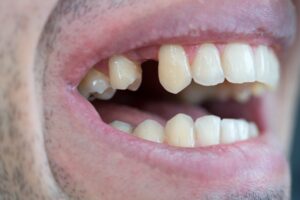
A periodontist is a dentist who specializes in the prevention, diagnosis, and treatment of periodontal disease and in the placement of dental implants. A periodontist is also a specialist in reshaping gum tissues, for reasons that may include esthetics as well as maintaining oral wellness.
I place many dental implants and am a proponent of them as a superior tooth replacement option. However, as ideal as an implant is, there is nothing as good for your oral health as natural teeth. This is why it’s so important to keep them. This may, for certain teeth, require the placement of a crown.
A periodontist may be involved in certain aspects of treatment to optimize a patient’s results and success level while minimizing discomfort. For instance, a periodontist may work with your general dentist to help save a tooth from removal when a tooth has broken close to the gum line. This is accomplished through crown lengthening procedures where gum tissues are removed to expose more of the tooth. This may be able to make sufficient tooth structure available to support a crown.
Crown lengthening is also beneficial in sealing gum tissues surrounding a tooth at its base. By securing the tissue around the tooth or crown, bacterial entry is avoided and the risk for periodontal (gum) disease decreased. This is especially beneficial in cases where gum tissues have receded, exposing sensitive tooth root sections that are easily affected by oral bacteria.
In some cases, gum tissue height can be corrected by careful removal in a procedure known as a gingivectomy. To enhance the appearance of a smile with an esthetically-pleasing smile line, combined with the placement of crowns, the tooth-to-gum ratio is rebalanced.
This is what is often referred to as a “gummy smile.” Crown lengthening is a common method that teams your general dentist with a periodontist to create a smile that looks natural and is beautifully flattering.
Another look at the risk-reward consideration, the “risk” of not caring properly for oral health can easily upend the “reward” of having a healthy smile. Regular dental check-ups and a thorough at-home oral hygiene regimen can prevent the development of cavities and periodontal disease.
When oral bacteria levels in the mouth are not managed, the teeth and gums pay the price, often through the need for costly treatment that may have been prevented. Periodontal disease is the nation’s leading cause of adult tooth loss.
Research has also found that the inflammatory bacteria of gum disease can enter the bloodstream, triggering or worsening a long list of serious health problems. These include heart disease, stroke, high blood pressure, diabetes, arthritis, memory loss, some cancers, impotency and Alzheimer’s disease.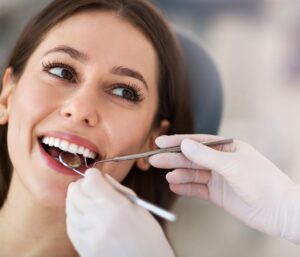
Although gum disease can exist without obvious signs or symptoms, the most commonly noticed are:
• Red, swollen or tender gums
• Seeing blood in the sink when brushing
• Receded gums
• Loose or separating teeth
• Pus pockets on gum tissues
• Sores in the mouth
• Persistent bad breath
As a periodontist in Asheville, we want everyone to know the benefits of a healthy, confident smile. Maintaining healthy gums and keeping your natural teeth is important to every individual.
If your gum health needs improvement or there are signs of gum disease, we can structure a program that restores healthy gums and helps you maintain your oral health between visits.
For those who have already experienced tooth loss, we are happy to discuss the process to replace them with dental implants. These are the closest thing to the natural teeth you had and will restore stability and dependable biting and chewing. Too, dental implants are designed to last a lifetime, making them an excellent investment.
With proper measures, you can enjoy healthy gums and natural teeth throughout your lifetime. Call 828-274-9440 to schedule a periodontal examination or ask for a consultation to get to know us. A referral to our office is not required.
If dental fear or anxiety has kept you from receiving regular dental care, please ask us about oral or I.V. sedation (“twilight sleep”). Both are administered safely with patient comfort always a priority.
Females & Males – Oral Health Differences
Posted on Jun 05, 2024 by William J. Claiborne, DDS MS
As a periodontist, I have an intense understanding of how oral health impacts the overall health of both males and females. However, my specialized skills also allow me to understand the unique factors that affect the oral health of our female patients.
As a result of hormonal fluctuations, females can face particular challenges when it comes to oral wellness. For example, pregnancy gingivitis is not uncommon in women during pregnancy. If not treated and resolved, however, it can develop into periodontitis (advanced periodontal disease) and subsequent tooth loss.
A good illustration of how women face unique oral health challenges was noted in findings shared recently on Fox News. (https://www.foxnews.com/health/women-experience-dental-health-issues-men-experts-say-heres-what-do-about)
Using a pH meter, the pH levels in saliva were tested on multiple people over the course of many years. The researchers found the pH of women’s saliva was frequently 5.5 or 6 – a lower saliva flow rate than men.
Saliva’s ideal pH rate is between 7 and 7.4. If the pH of saliva constantly drops below 5.5, the tooth enamel gets demineralized, which means it will be more prone to tooth decay. Because the aging process causes a lower flow of saliva, a drier mouth weakens teeth due to the slower remineralization or buffering capacity.
Below are some of the different phases of life that can be accompanied by various challenges to a female’s oral health:
Puberty: Estrogen and progesterone hormones produced during puberty increase blood flow to the gums. This changes how the gums respond to plaque, the sticky film of bacteria in the mouth. With this may be gums that bleed when brushing and become red, tender, and swollen.
Menstruation: The menstrual cycle causes hormonal changes that cause some women to experience symptoms such as swollen gums that turn bright red, canker sores, or gums that bleed easily. Referred to as menstruation gingivitis, this usually occurs just prior to the onset of the period and resolves in a day or so.
Oral Contraceptives: Taking birth control pills that contain progesterone cause some women to have gum tissue inflammation. This occurs from heightened sensitivity to the toxins produced from the overload of bacteria that form plaque. While many women have less gum reactions after the first few months, some medications can lower the effectiveness of oral contraceptives. This reinforces the need to keep your dentist updated on all medicines you take.
Pregnancy: With each trimester of pregnancy, hormonal levels can change. Pregnancy also causes increased progesterone levels, which can increase the risk for plaque formation. This can lead to pregnancy gingivitis, particularly during the second to eighth month of pregnancy. This condition causes the gum tissues to become swollen and bleed easily. Gingivitis is the first stage of gum disease, which is why it is important to have gingivitis fully resolved to prevent its further progress. Because studies have found that gum disease can increase the risk for preterm and low birth weight babies, obstetricians are urging their pregnant patients to be particularly diligent in maintaining good oral health.
Menopause: With age, a variety of changes can take place in our mouths for both males and females. A particular challenge is the decrease in saliva flow, leaving the mouth is less moist. Additionally, the side effects of certain medications can pose challenges to keeping the gums healthy. Without adequate saliva flow to keep the mouth cleansed and efficient in neutralizing the acids from plaque, the risk for gum disease is greater for females in menopausal years. Declining estrogen levels also place women at greater risk for bone loss or osteoporosis as well as inflamed gum tissues around the teeth (called periodontitis). When there is bone loss of the jaw, it can result in tooth loss. Receding gums are a sign of this bone loss since more of the tooth surface is expose to the causes of tooth decay.
Researchers in Romania studied the gender differences in oral health. Through an online survey of 600 adults, the study assessed attitudes, behaviors, and educational understanding related to oral health and dental services.
The results show that women have more positive attitudes towards dental services with higher oral health values, better self-care behaviors, and have higher oral health literacy than men.
While the study indicated that oral care attitudes and behaviors of men had different influencing factors, women were primarily influenced by their level of oral health literacy. The study also noted that differences in oral health attitudes and values for both genders can be based upon education.
https://www.ncbi.nlm.nih.gov/pmc/articles/PMC9604615/
This is a good reason to stay on top of how intricately your oral health is to your overall health. Because the bacteria of periodontitis can penetrate the bloodstream through weak gum tissues, it has been correlated to a long list of serious health problems.
Research has found that periodontal bacteria can trigger the development or worsen the likelihood of heart disease, stroke, some cancers (including pancreatic and lung
cancer), preterm babies, diabetes, arthritis, erectile dysfunction, Alzheimer’s disease and more.
Although gum disease can exist without obvious signs or symptoms, the most commonly noticed are:
• Red, swollen or tender gums
• Seeing blood in the sink when brushing
• Receded gums
• Loose or separating teeth
• Pus pockets on gum tissues
• Sores in the mouth
• Persistent bad breath
In our Asheville periodontal dental office, patients can begin with a private consultation. We are always happy to discuss oral health options with new patients. A referral is not needed.
Call 828-274-9440 to schedule.
Recent Posts
Categories
Archives
- September 2024
- August 2024
- July 2024
- June 2024
- May 2024
- April 2024
- March 2024
- February 2024
- January 2024
- December 2023
- November 2023
- October 2023
- September 2023
- August 2023
- July 2023
- June 2023
- May 2023
- April 2023
- March 2023
- February 2023
- January 2023
- December 2022
- November 2022
- October 2022
- September 2022
- August 2022
- July 2022
- June 2022
- May 2022
- April 2022
- March 2022
- February 2022
- January 2022
- December 2021
- November 2021
- October 2021
- September 2021
- August 2021
- July 2021
- June 2021
- May 2021
- April 2021
- March 2021
- February 2021
- January 2021
- December 2020
- November 2020
- October 2020
- September 2020
- August 2020
- July 2020
- June 2020
- May 2020
- April 2020
- March 2020
- February 2020
- January 2020
- December 2019
- November 2019
- October 2019
- September 2019
- August 2019
- July 2019
- June 2019
- May 2019
- April 2019
- March 2019
- February 2019
- January 2019
- December 2018
- November 2018
- October 2018
- September 2018
- August 2018
- July 2018
- June 2018
- May 2018
- April 2018
- March 2018
- February 2018
- January 2018
- December 2017
- November 2017
- October 2017
- September 2017
- August 2017
- July 2017
- June 2017
- May 2017
- April 2017
- March 2017
- February 2017
- January 2017
- December 2016
- November 2016
- October 2016
- September 2016
- August 2016
- July 2016
- June 2016
- May 2016
- April 2016
- March 2016
- February 2016
- January 2016
- December 2015
- November 2015
- October 2015
- September 2015
- August 2015
- July 2015
- June 2015
- May 2015
- April 2015
- March 2015
- February 2015
- January 2015
- December 2014
- November 2014
- October 2014
- September 2014
- August 2014
- July 2014
- June 2014
- May 2014
- April 2014
- March 2014
- February 2014
- January 2014
- December 2013
- November 2013
- October 2013
- September 2013
- August 2013
- July 2013
- June 2013
- May 2013
- April 2013
- March 2013
- February 2013
- January 2013
- December 2012
- November 2012
- October 2012
- September 2012
- August 2012
- July 2012
- June 2012


